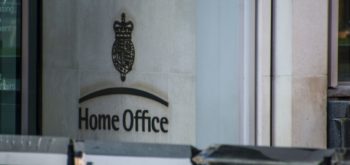One of the disappointing features of the previous lock down period was the systematic failure to enable residents of care homes to continue seeing their loved ones.
Helen Whately MP, Minister for Care, rightly points out that ‘health and social care has been at the frontline of the nation’s response to covid-19, with social care providers looking after many of the most vulnerable in society’. Despite this recognition, very little has been done to prevent what the British Geriatrics Society describes as the ‘detrimental effect on care home residents’ mental and physical health caused by loss of contact with their loved ones’.
As the country settles in to a second lockdown, it is important to reflect on the lessons learnt from earlier this year.
Protection vs quality of life
The Mental Capacity Act 2005 framework was designed to enable and support individuals to make decisions about their own lives and, where that is not possible, to ensure that decisions made of their behalf are in their best interests. Dr. Lucy Series reminded the Joint Committee on Human Rights in March 21, 2018 that these decisions give effect to a variety of rights, for example the right ‘to have contact with your family, to choose where you live, to choose how you live your everyday life’.
It is not unusual for these rights to conflict with one another and the Court of Protection often balances various competing considerations. However, the COVID-19 crisis has brought these tensions into stark focus like never before. The state has had to balance its responsibility to protect ‘the most vulnerable in society’ while also respecting their private and family rights. In practical terms, social workers have had to keep care home residents safe from the virus while also ensuring that their other rights are safeguarded and considered.
The case of BP v Surrey County Council & Anor [2020] EWCOP 17 considered this tension, and the court was asked to determine whether it would be in BP’s best interests to return home or stay in his current care home in circumstances where his care home had suspended family visits. Hayden J noted:
‘In my view, it is necessary to state the risk BP faces, were he to contract the virus, in uncompromising terms: there would be a very real risk to his life. Manifestly, there are powerful and competing rights and interests engaged when considering this application.’
Ultimately, the parties managed to develop a plan to enable BP’s family to visit him from a distance via a fire door. Since March 2020, when this judgment was published, this kind of flexible approach has been replicated by various local authorities around the country and social workers have arranged for contact to take place from windows, balconies or electronically. This ingenuity is to be applauded.
However, it is self-evident that care home residents often have disabilities or other difficulties which make creative solutions unworkable for them. Therefore, the result seems to have been that residents went without access to their family in the last lockdown period unless they had a diligent social worker, access to electronic devices or were physically and cognitively able to have contact through a window.
This is sadly part of the reason why the Alzheimer’s Society recorded a deterioration in the health of residents in 80% of the 128 care homes that they surveyed. The charity also generally identified an increase in cognitive impairments during the previous lockdown caused by isolation, the reduction in essential care as family carers cannot visit, and the onset of depression as people with dementia do not understand why loved ones are no longer visiting.
Until recently, there has not been any centralised guidance about how residents of care homes can safely see their loved ones. Following a campaign from the British Geriatrics Society and the Guardian newspaper, the Department of Health and Social Care published new guidance on 5 November 2020 to support care homes to allow families to visit residents.
This guidance stops care homes from implementing any ‘general policy’ prohibiting contact. Providers must instead consider the rights of residents and work collaboratively with them and their family to find a safe way to enable contact to take place. This effectively passes the burden back to care homes to develop safe visiting practices but does also provide advice on measures that can be put in place. The guidance has been welcomed by Mr Justice Hayden, Vice President of the Court of Protection, in a letter dated 6 November 2020 which notes:
‘Emphasis is correctly, in my view, placed on the importance of Care Home providers, families and local professionals working together to find the right balance between the benefits of visiting on wellbeing and quality of life, and the risk of transmission of COVID-19 to social care staff and vulnerable residents as we enter national restrictions.’
Lawfulness of preventing contact
While the guidance is a welcome step forward, it may present a disturbing legal precedent for depriving people of their liberty without proper authorisation. The guidance notes that ‘in most cases, changes to a person’s care or treatment in these scenarios will not constitute a new deprivation of liberty, and a DoLS authorisation will not be required. Care and treatment should continue to be provided in the person’s best interests’.
It is difficult to see how contact restrictions which, for a number of months, have prohibited any contact between residents and their family is not a more restrictive environment than most residents were previously subject to. However, the Department of Health and Social Care’s guidance means thatthese restrictions are unlikely to need any further legalauthorisation despite having a huge impact on residents’ quality of life.
The Council of Europe’s European Committee for the prevention of torture published a Statement of Principles on 20th March 2020 reinforced various principles that member states should abide by. This list of principles, includes the fact that ‘any restrictive measure taken vis-à-vis persons deprived of their liberty to prevent the spread of COVID-19 should have a legal basis and be necessary, proportionate, respectful of human dignity and restricted in time.’
Additional restrictions have clearly been necessary to combat the spread of COVID-19 in care homes. However, contrary to the statement of the Council of Europe’s committee, the DSHC’s guidance suggests that any new restrictions on a person’s liberty need not have a new legal basis in most cases.
There may be a practical reason for this as the alternative would mean that local authorities would be required to review almost every standard authorisation in the country. This raises a question about the efficacy of the current deprivation of liberty safeguard framework as it does not allow local authorities to respond quickly to changes to a person’s care.
It is not good enough that vulnerable individuals are having their liberty curtailed without proper legal safeguards being in place. If those safeguards are impractical, then the system needs to be changed as a matter of urgency.
Conclusions
It is concerning that steps were not taken until the beginning of November to help care homes balance the complexity of protecting residents’ health while also allowing them to maintain contact with their family. The initial reaction from the Department of Health and Social Care appears to have been that a level of additional restriction is inevitable for residents given the COVID-19 crisis.
Charities and practitioners hope that this new guidance will lead to less isolation of care home residents and be a positive step to safeguarding their social and emotional needs, not just their immediate health.







